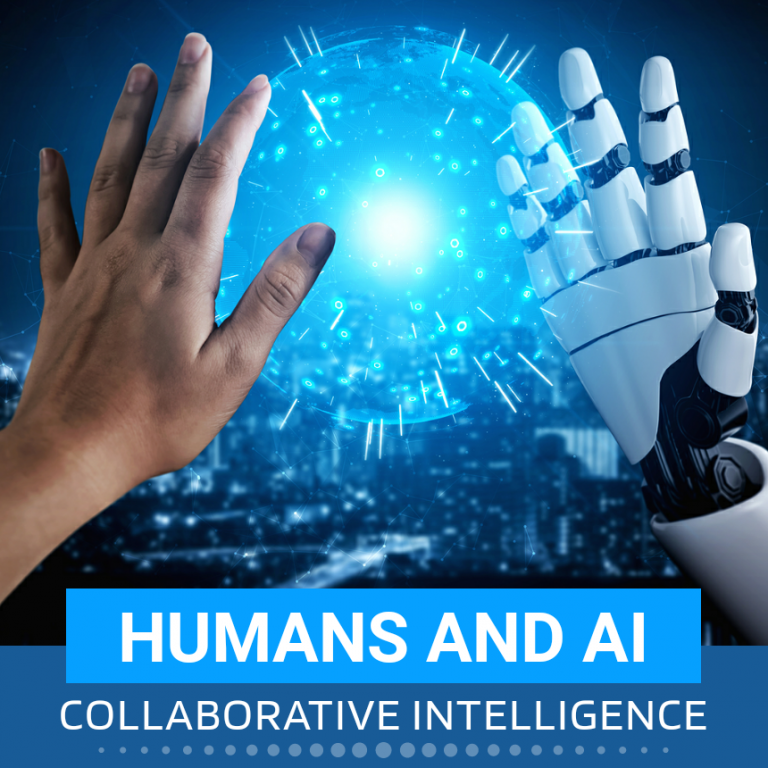
Artificial intelligence (AI) though not supplanting humans as of now, is becoming good in many things humans are good at such as translating languages, diagnosing disease, providing customer support and so on. The rate in which AI is invading human territory has raised reasonable fears that AI could replace us ultimately. But these fears are losing ground and it is now established that technology’s larger impact will be in complementing and augmenting human capabilities and not replacing them.
Collaborative Intelligence:
The companies that have used AI to automate processes. But those that deploy it to displace employees will see gaining only short-term productivity benefits. It has been noticed that firms achieve significant performance improvements when humans and machines work hand in hand. Humans and technology, through collaborative intelligence, actively enhance each other’s complementary strengths. Leadership, teamwork, creativity, and social skills of the humans and the speed, scalability, and quantitative capabilities of technology.
Businesses should understand how humans can most effectively augment machines, how machines can enhance the best of humans, and how to redesign business processes to support the human-technology partnership.
Related: Automation – The New Business Imperative
Humans Assisting Machines:
There are three crucial roles humans need to perform. They ought to train machines to perform certain tasks. Explain the outcomes of these tasks when the results are counterintuitive or controversial. Sustain the responsible use of machines.
- Training: Machines powered by machine-learning algorithms must be taught to perform the work they are designed to do. Huge training data sets are collated to teach machine translation apps to handle idiomatic expressions, medical apps to detect disease, and recommendation engines to support financial decision making. Artificial intelligence also must be thought to interact with humans. AI assistants or chatbots are now being trained to display even more complex and subtle human traits, such as sympathy.
- Explaining: AI requires human experts in the field to explain their behavior to non-expert users, as AIs reach conclusions through processes that are not so transparent.
- Sustaining: Apart from having people to explain as mentioned in the point above, businesses need ‘sustainers’. These are employees who work without a gap to ensure that AI systems are all functioning properly, safely and responsibly.
Machines Assisting Humans:
AI is helping humans expand their abilities in three ways such as amplify our cognitive strengths, interact with customers and employees to free us from higher-level tasks and embody human skills to extend our physical capabilities.
- Amplifying: AI can boost our analytic and decision-making abilities by providing the right information at the right time and also heighten creativity.
- Interacting: Human-technology alliance enables businesses to interact with employees and customers in the novel, and more effective ways.
- Embodying: Though many AIs such as Cortana and Aida exist principally as digital entities, there are applications where intelligence is embodied in a robot that augments a human worker. AI-enabled machines can recognize people and objects and work safely alongside humans in factories, warehouses, and laboratories, thanks to their sophisticated sensors, motors, and actuators.
Redefining your Business:
Once you have onboarded Artificial intelligence in your business, you ought to redesign operations. For this to happen, companies must first discover and describe an operational area that can be improved. Furthermore, several new AI and advanced analytic techniques can help you understand and identify previously invisible problems that are amenable to AI solutions.
Related: AI is Capable of Outdoing Us Humans


